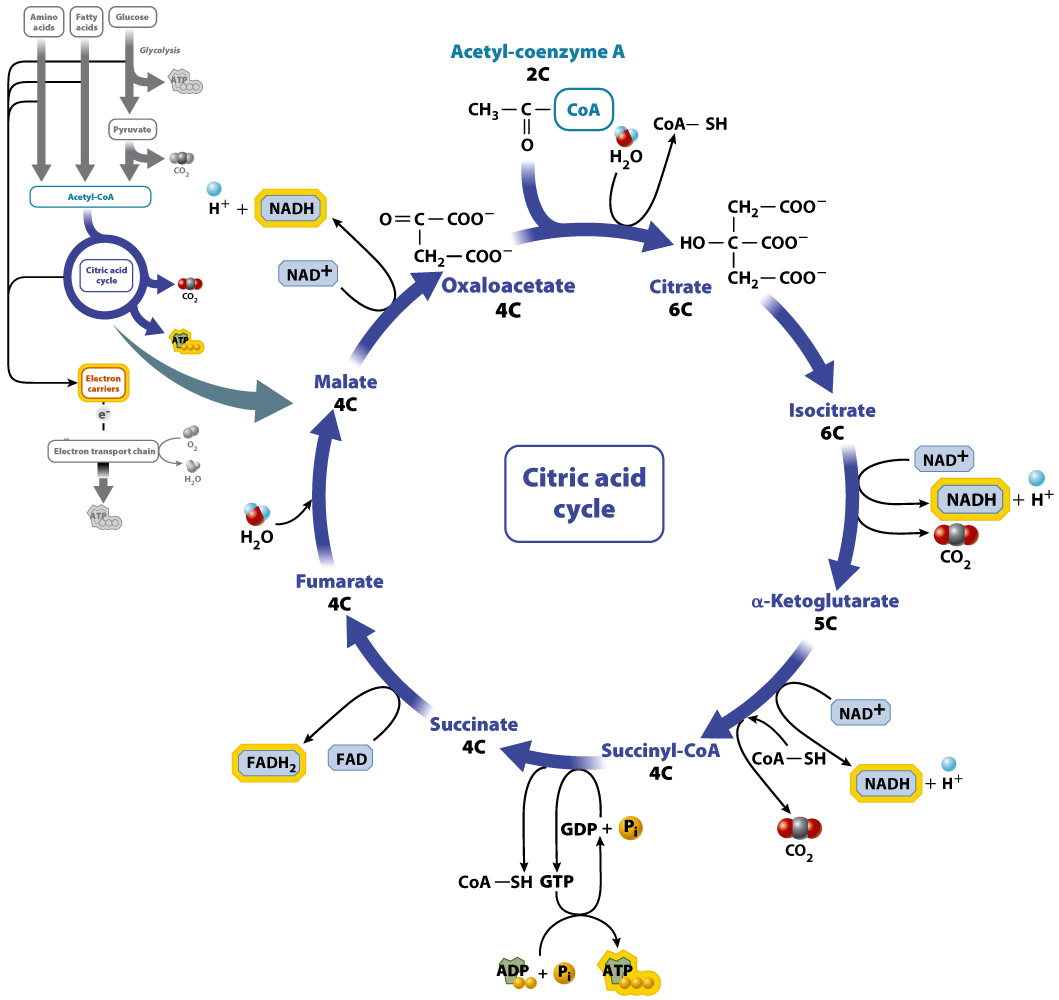The citric acid cycle produces ATP and reduced electron carriers.
Like the synthesis of acetyl-

In the first reaction, the 2-
The citric acid cycle results in the complete oxidation of the acetyl group of acetyl-CoA. Since the first reaction creates a molecule with six carbons and the last reaction regenerates a 4-carbon molecule, two carbons are eliminated during the cycle. These carbons are released as carbon dioxide. Along with the release of carbon dioxide from pyruvate during pyruvate oxidation, these reactions are the sources of carbon dioxide released during cellular respiration and therefore the sources of the carbon dioxide that we exhale when we breathe.
The oxidation reactions that produce carbon dioxide are coupled with the reduction of the electron carrier NAD+ to NADH (Fig. 7.8). In this way, energy released in the oxidation reactions is transferred to NADH. More reduced electron carriers (NADH and FADH2) are produced in two additional redox reactions. In fact, the citric acid cycle produces a large quantity of reduced electron carriers: three molecules of NADH and one molecule of FADH2 per turn of the cycle. These electron carriers donate electrons to the electron transport chain, which leads to the production of ATP by oxidative phosphorylation.
One of the reactions of the citric acid cycle is a substrate-
Overall, two molecules of acetyl-
Quick Check 3 At the end of the citric acid cycle, but before the subsequent steps of cellular respiration, which molecules contain the energy held in the original glucose molecule?
Quick Check 3 Answer
At the end of the citric acid cycle, the energy in the original glucose molecule is held in ATP, NADH, and FADH2.